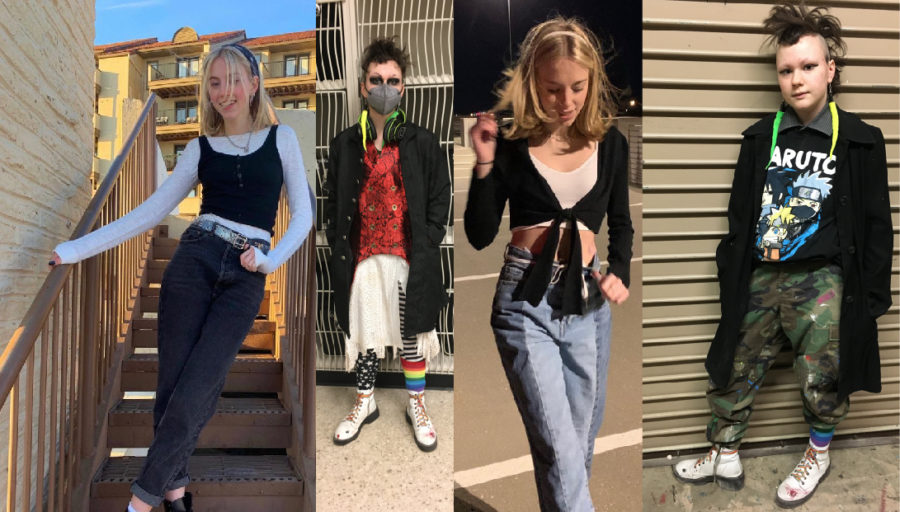Dress Code Dilemmas and Fashion Frenzies
students, staff comment on dress code, fashion
The Purpose of the Policy
Principal outlines dress code regulations
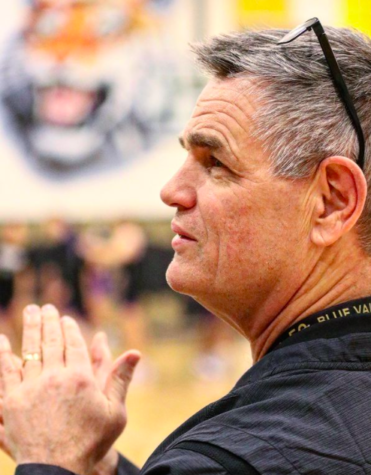
Recently this semester, Principal Scott Bacon has held class meetings with all four grades to discuss the lack of adherence to the dress code. From the start of the school year, however, he believes he has been straightforward about his dress code expectations.
“I’m pretty clear with our students upfront at the beginning of each semester that we don’t have a lot of rules, but the few rules that we have, we expect everybody to follow,” Bacon said.
Bacon has seen a substantial increase in the number of dress code encounters.
“The number of occurrences that we encountered this fall were far more than we ever have [had],” Bacon said.
Dress code standards can vary across the district but each school’s guidelines stem from the same place.
“There are some items that originated with the school board or the board of education,” Bacon said. “There are [also] some local interpretations of that per school.”
The benefit of this system is the school’s flexibility to adapt outdated dress code regulations — such as the use of hats in school.
“It used to be that we had a no hat policy, but some of our sister schools did not,” Bacon said. “We took a look around the district and realized it’s time for us to adjust that — so this year, we don’t have that anymore. That’s long been a policy here [that] was a really big issue with our students.”
Bacon has witnessed primarily compliance with the school’s dress expectations.
“We have 1500 students here and I think most of our students do a great job of abiding by the parameters that we have every day,” Bacon said. “We may have a handful that don’t — that is not often.”
Nevertheless, support for an increase in dress code guidelines has been brought to Bacon’s attention.
“I’ve had many people say they thought that we should have a stricter dress code because the length of shorts that one observes or the bare midriffs that one observes is concerning,” Bacon said.
Bacon promises to listen to students and remain open-minded, just as in the past. Approximately eight years ago, his involvement led to the implementation of the thumb rule, showing that there is potential for the dress code to change.
“There was the issue of how short of shorts a person should be allowed to wear,” Bacon said. “I met with our student council [and] site-based leadership team and got feedback from both groups. Our site-based leadership team has parents, teachers and students on it that meet with me once a month. It was reviewed, discussed, supported and consented to by our own student population, as well as our parent population.”
Countering such distractions is the goal of the administration’s dress code.
“We’re trying to provide an appropriate learning environment in terms of length or the amount of [clothing] material. It needs to be appropriate and conducive to a learning environment,” Bacon said. “Those wouldn’t just be my words — but the general consensus of our community in our school district.”
Dress to Success
Senior explains sexism in dress code, benefits of ‘dressing up’
For many decades, dress codes have been a standard code of conduct in schools, but fashion and style have now indicated new ideals of individual independence, fairness, and reason. Senior Emma Grewe explains her reasoning on why dress coding leads to the sexualization of women.
“It’s really sexist because all the rules are for girls. Guys could probably walk in shirtless and no one would really say anything. There shouldn’t be old men telling us that they’re distracted by our shoulders and stomachs. It’s really weird and a little uncomfy,” Grewe said. “I know they have to have some kind of dress code, but it’s just a little bit ridiculous in my opinion.”
A dress code or appearance policy allows staff members of a school to set expectations for the school’s image. However, Grewe combats this by finding methods to prevent herself from getting dress-coded.
“There are always ways to get around it,” Grewe said. “I’ll just bring a jacket in case they like to say something. I put a jacket on and then they can’t say anything about it.”
As dress codes have gained notoriety as a social and political point of controversy, Grewe makes another statement on why and how dress codes affect students.
“I don’t know if dress codes affect anybody in a real way, but it just makes you feel weird. [It] makes you feel uncomfortable when people are telling you that [you] just sitting there in class is distracting,” she said.
Many love the excitement of shopping for different types of clothing and updating our wardrobe. For Grewe, she has been given the opportunity to explore a wide variety of styles.
“It kind of depends on the day but I’m into the 80s and 90s kind of stuff,” Grewe said. “I go thrifting a lot because it’s really cheap and they have cool stuff. I also like Pacsun jeans. I shop online a lot because it’s cheap.”
While dressing up can make people feel good about themselves, it can also help them feel self-assured and motivated to focus in their classes.
“It makes me want to go to school because I like fashion a lot. That’s how I get myself to get up and go to school — because I get to dress cute.”
Fashion is loved all over the world. You can reinvent, express, create, and stand out from the crowd. It also gives you a boost of confidence, because if you look good, you feel good inside.
“I like to do it with confidence,” she said. “If [you’re] wearing something that [you] like, just walk around acting confident and everyone else will think you look good.”
Compliance is Crucial
French teacher ‘dress codes’ students
Compliance with the high school’s clothing guidelines is a standard that French teacher Carol Bar expects of all of her students.
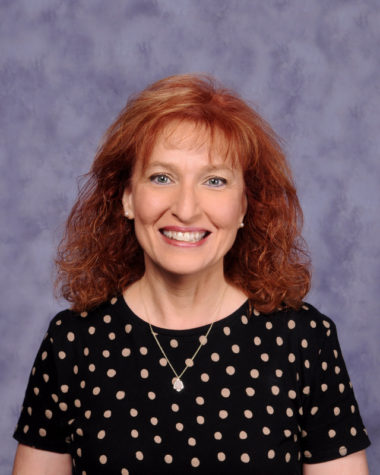
“It’s important to know the [dress] code of any place where you are working [or] going to school,” Bar said. “Schools are in the business of learning and teaching and we have to remember that school is not home, the beach, [or] your bedroom. We need to dress appropriately for our school environment so that there are no distractions to learning and teaching.”
Bar is familiar with the school’s dress policies and understands the reasoning behind them.
“[The dress code] has to do with the length of shorts, skirts and dresses and whether or not shoulders are exposed [or if] pants are below the waist,” Bar said. “I personally am uncomfortable when students come in and they’re showing a lot of skin.”
Outside of the dress code, Bar expresses discontent with the growing number of students dressing informally to school
“I have a problem with kids showing up in PJs when it’s not spirit week,” Bar said. “We’re not at home. What if your teachers showed up in PJs?”
Imposing the expectations of the dress code can be uncomfortable for teachers but it is a necessary element of the job.
“Teachers don’t want to write kids up — we handle it discreetly, privately, and ask them to just put a jacket on or pull their pants up,” Bar said. “Hopefully [the student] will respond respectfully and understand that we’re just trying to do our jobs and enforce what the district wants us to enforce.”
Arriving to Blue Valley from a private school background, Bar has seen the positive impacts uniforms can bring in addressing the dress code controversy.
“[With] uniforms, I can tell you that we didn’t have any dress code issues,” Bar said. “[They] alleviate any confrontation that a teacher might need to have with a student and put everyone on a level playing field. People weren’t comparing [themselves to] what somebody else was wearing — they were focused on learning.”
However, Bar does not feel uniforms are the ultimate answer to the problem.
“I’m not a proponent of uniforms because I’m all about freedom of expression,” Bar said. “I believe in individuality. I just feel like people need to do that in an appropriate and respectful manner for the environment that they’re in.”
The disruption to learning is the primary reason for dress code expectations in schools.
“I don’t think [students] see [dress code violations] in the same way as adults do as a potential distraction, so they wonder why we make a big deal about it,” Bar said. “I don’t think they have that experience or maturity to imagine that that could be a potential distraction to instruction [and that’s] why it’s a problem.”
When addressing the common concern of sexism in dress codes, Bar feels as though the current fashion styles are to blame for the perception that more females are being dress coded.
“I’d like to think that it’s not specific to girls. It just happens to be the clothing,” Bar said. “I don’t really look at if it’s a girl or a boy. It’s just what is being revealed [in] their choice of clothing so for me, [the] dress code is fair across the board.”
According to Bar, ever-changing trends serve as evidence that the dress code itself isn’t sexist.
“I remember in years past having a lot of conversations and confrontations with boys because their pants were always falling down and I could see their underwear,” Bar said. “I haven’t seen that a lot lately. It’s not the trend anymore. But at that time, it really wasn’t even about the girls.”
Bar upholds the clothing standard regularly but attempts to address the issues that arise in a respectful manner.
“[When bringing up the dress code,] I’m doing my job, and I really need you to do your job by following the rules,” Bar said. “I just try to reason with the student and I let them know it’s not a personal attack at all.”
Saying ‘Yes’ to Sleepwear
Sophomore regularly wears pajamas to school
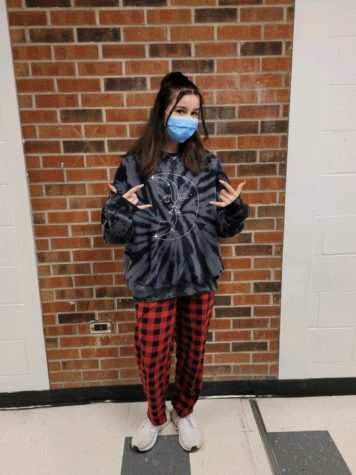
Though some students may find joy and confidence in getting “dressed up” for school, others prefer to stay “dressed down” in a pair of pajama pants. For sophomore Julia Kingsbury, PJs are a staple in her school closet.
“I like wearing PJs to school because I learn better when I’m comfortable and happy,” Kingsbury said. “PJs are the most comfortable thing I own. I wear PJ pants at least 3 out of 5 school days.”
Contrary to popular belief, Kingsbury finds that PJs have a positive effect on her performance in school.
“If anything, it has helped. When wearing a nice outfit I constantly think about the thoughts of others and can’t focus on my work,” Kingsbury said. “When wearing PJs I’m not concerned with what others think about me. [I] can focus easier, and I’m in a better mood.”
Besides improving her focus, Kingsbury has found various other advantages to wearing PJs.
“Some benefits of wearing PJs to school are comfort,” Kingsbury said. “It saves time and keeps you warm during winter.”
The inconveniences posed by wearing PJs are, according to Kingsbury, minor and manageable.
“Depending on the weather, you might get a little warm wearing fuzzy PJ pants,” Kingsbury said. “Other than that, I haven’t ran into any disadvantages.”
Kingsbury believes that students are not and should not be distracted by her choice of clothing.
“People are not distracted by me because many people wear PJs to school,” Kingsbury said. “A majority of people are just trying to get through their day and aren’t concerned with what others are wearing.”
On the other hand, Kingsbury’s sleepwear has led her to receive lighthearted comments from her peers.
“One person asked ‘Do you only wear PJ pants to school now?’ I just said ‘yes’ and moved on,” Kingsbury said. “I’ve also been asked ‘How many pairs of PJ pants do you have?’ several times.”
As for her family’s perspective, Kingsbury’s parents simply want her to adhere to the formal dress code.
“They let me wear whatever I want as long as it’s modest and respectful, which has never been an issue,” Kingsbury said.
While she understands why teachers may find her apparel “unprofessional,” Kingsbury doesn’t share that expectation of attire.
“I think [that] for students school is a place of learning, not business,” Kingsbury said. “If I am still learning, I think it’s perfectly reasonable.”
The Facts of Fashion
School psychologist provides scientific perspective on dress codes, fashion
Supporters of the dress codes claim they help students feel more comfortable and cut down on distractions. On the other hand, opponents of the dress codes disagree that they discriminate against women and violate students’ rights to freedom of expression. School psychologist Todd McCarthy shares his opinion that having a school dress code can be purposeful to society. 
“You’re going to have kids that come from vastly different socioeconomic backgrounds. The dress code exists to kind of keep the focus on school to keep the focus on peer development and to eliminate anything that may be an impediment,” McCarthy said. “I believe in everybody’s right to free speech and say whatever they want to say. That can be difficult in schools because people are wearing things that cause disruptions.”
In the Blue Valley district, many students aren’t thrilled about a conservative dress code. On the other hand, most older people believe that it can increase performance.
“When you’re younger [you get] that sense of ‘I know it all. I can do it all’ and ‘These old people have nothing on me.’ You’re smart, you have achieved and worked hard. ‘I’ve done all this stuff, so why should I be told what I can and can’t do at this point?’” McCarthy said.
Despite this backlash from students, McCarthy believes that compromise will be critical in a conflict such as this.
“I think it’s important that we treat you with respect, but that doesn’t mean giving in to every desire and request — it means having discussions. Sometimes we’re going to agree, sometimes we’re not.”
McCarthy finds that self-expression is necessary, but can conflict with tradition, which causes the troubling generation gap.
“You should want to be yourself [and] express yourself. That’s what it is — it’s that you have young people that want to express themselves and grow, [but] you have older people that say, ‘Hey, we love the way we do things.’”
McCarthy explains how fashion and psychology are an aspect of self-expression
“There are people that will [wear] what’s hanging in the closet, and there are people that are very deliberate about what they wear,” Mr. McCarthy said. “People might be struggling with an inner part of their personality, but they’re trying to figure themselves out. Their clothing is a manner of expression.”
Known as enclothed cognition, the psychology behind fashion proves that the way we feel on the inside is influenced by what we wear.
“Expression in psychology speaks to who we are,” he said. “The psychology behind it is a way for us to speak without saying a word.”
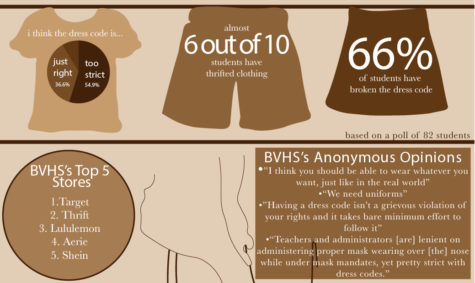

Stephanie Kontopanos is a senior and the assistant editor of The Tiger Print. This is her third year on staff and her second year being the Newspaper Grandma...
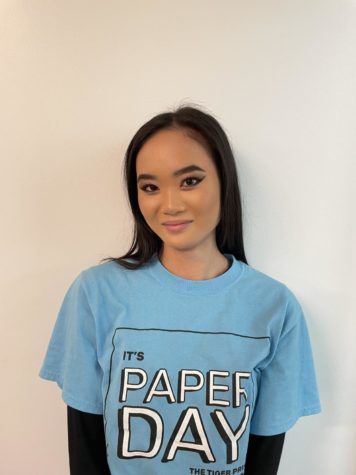
Mena Walker is a senior and this is her second year on staff. In school, she’s involved in NHS, Varsity Tennis, Galley Club, and Book Club. She is...
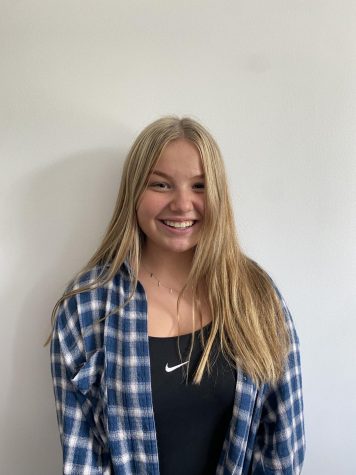
Elle Moulder is a sophomore and this is her first year on staff. She is currently a student at the University of Alabama Early College. She wants to...

Isabella Vaz is a sophomore in her second year on staff. She enjoys hanging out with friends, traveling, and watching Netflix. Her favorite thing to do...



